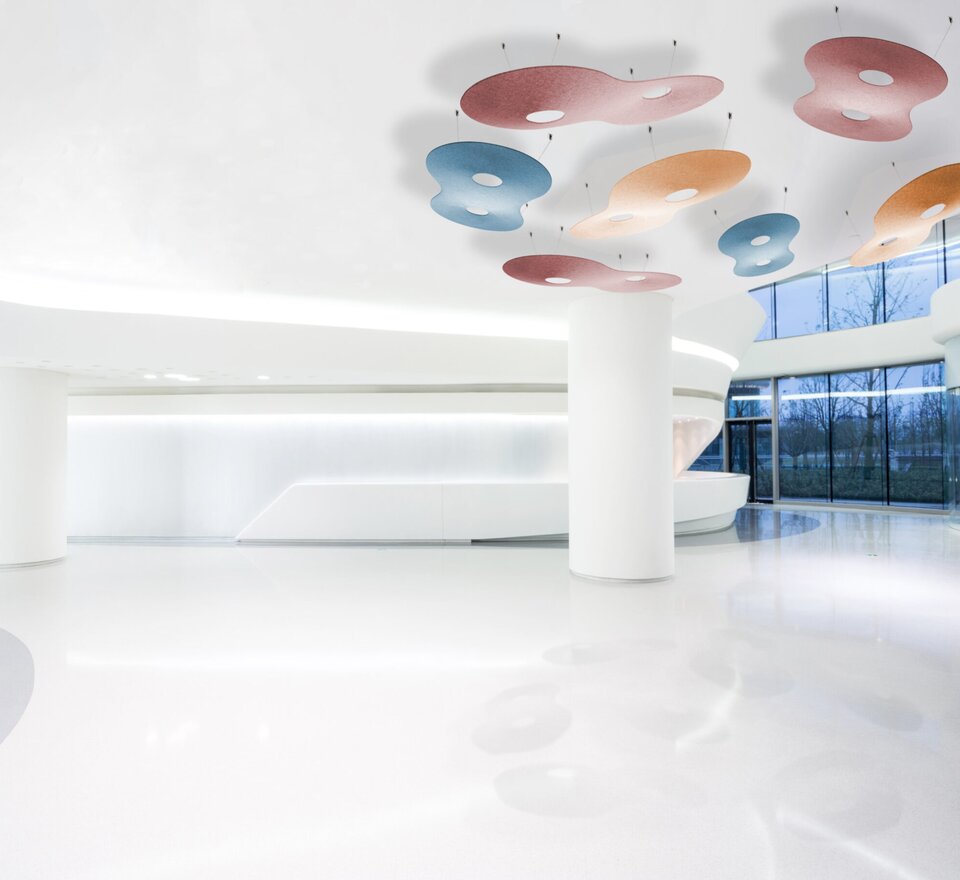Pay attention because room acoustics is an underestimated topic that absolutely must be taken into account right from the start when planning an office. We asked Gernot Wurm from Tante Lotte Design GmbH some of the most common questions about acoustics.
Of all the aspects that require consideration in office planning, acoustics play a pivotal role. Tante Lotte, a company which produces innovative and sustainable acoustic solutions made from Tyrolean sheep’s wool that also meet high design requirements, deals with this issue. “The acoustics in offices are particularly important because the noise level rises directly here, reducing the ability of employees to concentrate. At the same time, this makes it difficult for people to make telephone calls or hold conversations. Poor room acoustics also lead to employees tiring more quickly, which lowers productivity,” says Gernot Wurm, an expert from Tante Lotte.
Reasons for poor acoustics.
So, how is it that rooms end up with poor acoustics? “Having too many reflective surfaces such as glass, concrete ceilings and wooden floors, etc. creates a longer reverberation time, making it harder to understand what is being said by another person. As a result, people automatically start speaking more loudly. The overall noise level rises and is often stressfully high,” explains Wurm. To counteract this problem there are a number of tips and solutions that can sustainably improve the overall room acoustics: “The use of sufficiently sound-absorbing materials, ideally on walls, ceilings or as free-standing elements, promotes healthy acoustics in the office. The ratio between reflective surfaces and room volume and sound-absorbing materials must be correct. The calculations for this can be made individually for each room,” reveals the acoustics expert.
Solutions with dual benefits.
Acoustically effective materials can have multiple functions and thus be doubly useful as, say, room dividers or design elements. In modern office space planning, in particular, it is important to combine acoustic elements and office design skilfully. “One way is to integrate the elements discreetly in the background using understated wall panels or ceiling sails. Design elements with image motifs are also very popular as another option. A further smart solution are adjusting elements that are used simultaneously for zoning and as pin boards,” says Gernot Wurm, describing the options.
About Tante Lotte:
With its Whisperwool, Tante Lotte is known for innovative and sustainable acoustic solutions, made predominantly from Tyrolean sheep’s wool that meets the highest design requirements. Its acoustic solutions harmonise with the materials of contemporary architecture, such as stone, glass, concrete or wood. Whisperwool also has a positive effect on room ergonomics as it absorbs sound and toxins.

